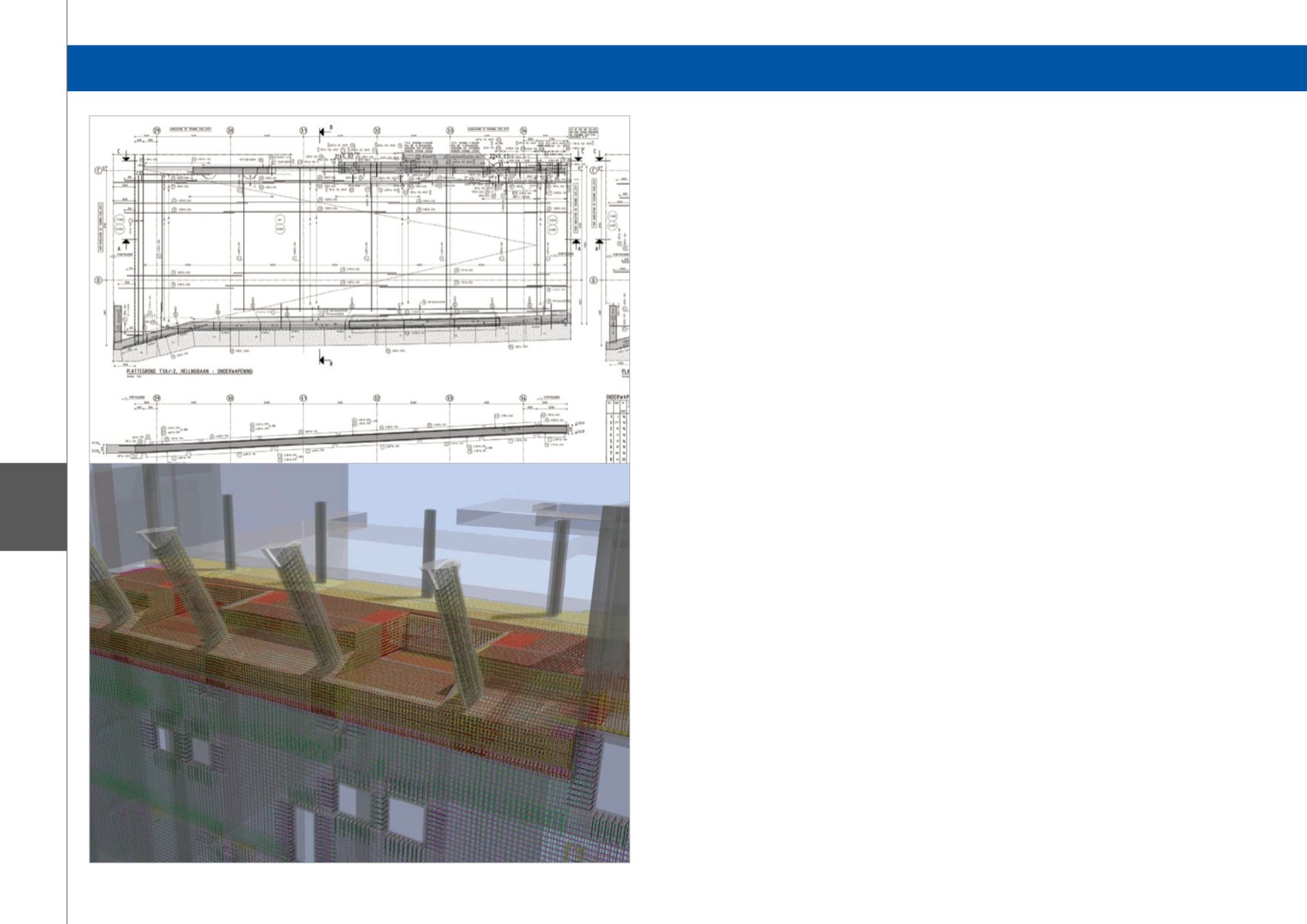
154
X2
Category 2: Civil Structures
Reinforcement Optimisation Rokin Metro Station North-South Line - Amsterdam, The Netherlands
Rokin station is part of the North-South metro line in
Amsterdam, the Netherlands. It is one of three deep
underground stations realised to date in the historic
city centre of Amsterdam . The project is characterised
by difficult soft soil conditions with high ground water
tables, very close to vulnerable historic buildings.
Therefore the limitation of deformations is the top
priority, resulting in a robust design with diaphragm
walls and a grout strut in the deep clay layer. The
station box Rokin is approximately 200 m long and 25 m
wide, with a maximum excavation depth of 26 m. Royal
HaskoningDHV, part of “Adviesbureau Noord/Zuidlijn”, is
responsible for the detailed engineering of Rokin.
Together with our client “Dienst Metro” (Metro
Department of the Municipality of Amsterdam) and
the contractor Max Bögl we are constantly looking for
optimisations within the project. To get a better grip on
the interaction between the execution and design, it
was decided two years ago to make a 3D model of the
station including all the necessary temporary works.
In the following process of time and cost optimisation,
several changes were made that required the re-
calculation of several parts of the structure. As a result,
existing drawings that were made with regular 2D CAD
software had to be changed. However, there were
several advantages in using the now available 3D model
to make completely new formwork and reinforcement
drawings. The 3D model was made in Revit Structure
and it was therefore decided to produce the formwork
drawings with the same software. To make detailed
reinforcement drawings, 3D Allplan was used. Elements
from the 3D model were exported to 3D Allplan with the
use of IFC files.
As already mentioned, the 3D model enables us to get
a better insight into the interaction between the design
of the structure, the execution of the work and the
temporary works, such as struts and supporting frames.
Another advantage is that optimisations in formwork
and reinforcement can be revised directly in the model
and all corresponding drawings will be automatically
changed. Due to the 3-dimensional animation and
collision control functions, possible conflicts in areas
with high reinforcement quantities are more easily
identified during the design. This increases the quality
of the drawings and reduces the amount of problems
during execution. The more realistic overview of the
reinforcement thereby helps to design the necessary
support reinforcement that is also included on the
drawings. The direct availability of the bar bending
schedules on the drawings increases the work speed for
the contractor.
3D Allplan enables us to draw complicated
reinforcement lay-outs with the help of intelligent
functions within the program. Besides existing
functionalities, some other methods are used to speed
up the process. When possible, due to repetition in the
structure, reinforcement is copied. The model is set up
in coordinates and therefore the labels and dimension
lines are lost when an element is copied and moved.
As labeling is a relatively time-consuming activity in
the process of making a reinforcement drawing, this
is a disadvantage. Royal HaskoningDHV developed
a “trick” that made it possible to copy and move an
element without the loss of the labels and dimension
lines (see [1]).
The 3D model also creates a solid base for the as-built
drawings that have to be made in the near future.
Deviations during execution can be adjusted directly
in the model. This enables, for example, the use of the
model for the technical installations design in an early
stage.
To date, approximately 70% of the drawings have
been delivered to the satisfaction of both the client
and the contractor. The use of 3D Allplan enables us
to implement optimisations in a short period of time.
The aforementioned advantages contribute to a more
efficient execution of the work and thereby help in
realising earlier project completion.
[1]
Van Baal, M. - “Verschuiven met behoud van
wapeningsmaatvoering en –labels “- CAD Magazine
2013-01
Software: Allplan Engineering


